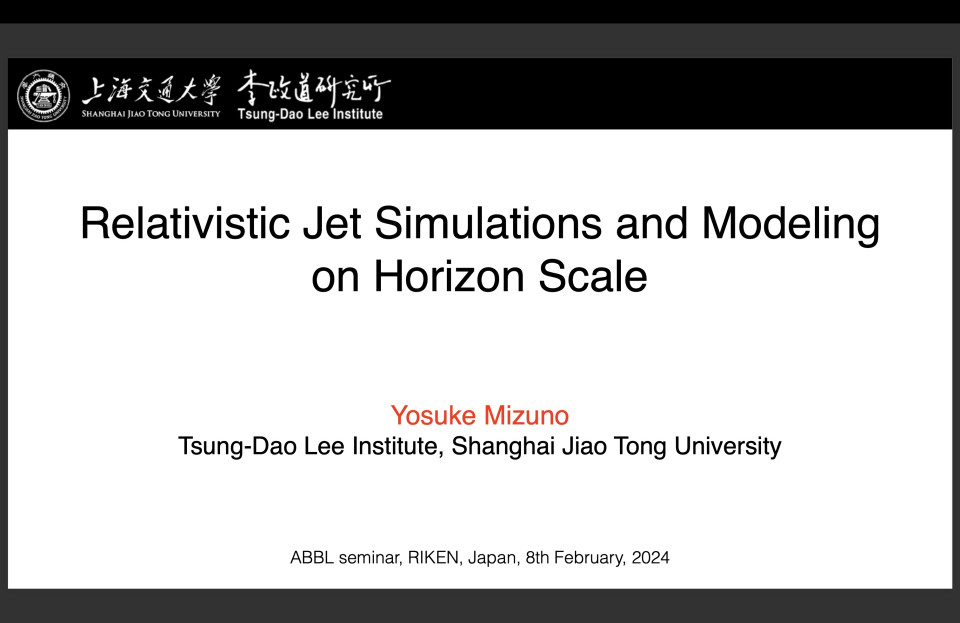ABBL-iTHEMS Joint Astro Seminar by Yosuke Mizuno on February 8, 2024
On February 8th, Prof. Yosuke Mizuno (Shanghai Jiao Tong University) gave a talk about the numerical simulations of the jet launching process at the vicinity of black holes. Supermassive black holes hosted in active galaxies are known to launch relativistic jets and emit electromagnetic signals across a wide range of energy bands. A notable example is the nearby supermassive black hole hosted in the M87 galaxy. Recent results from the Event Horizon Telescope, which has provided a radio image of the vicinity of the black hole, have revealed a signature of curved space-time. In the talk, after giving a broad overview of this topic, he described the current understanding of the physics at the horizon scale of black holes based on his numerical simulations. He carried out 3D general relativistic magneto-hydrodynamical simulations and general relativistic radiative transfer calculations to investigate the jet launching process and the radiative signature at the horizon scale. He has shown that his calculations can successfully reproduce the results of the Event Horizon Telescope. At the same time, while it is robust that the curved space-time signature is present in the observation, uncertainty remains in the physical properties such as the spin of black hole and the degree of magnetization of the accretion flow. To further pin down these properties, higher quality observational data are required.
Reported by Hirotaka Ito

